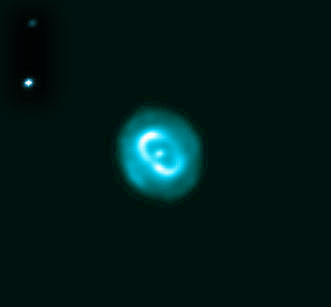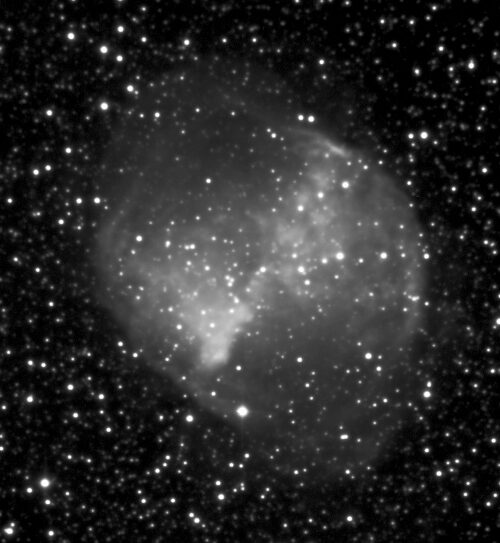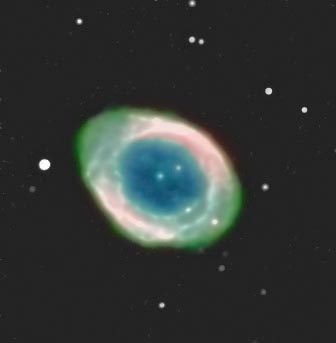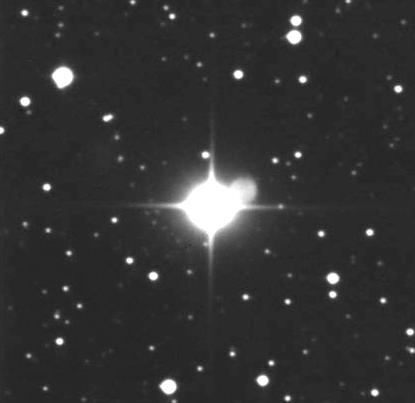Planetary
Nebulae
When (Some) Stars Die...
These nebulas arise from developments near the end of a star’s life in which stellar material is first liberated by solar radiation pressure and later illuminated through excitation by ultraviolet light. Such an object can only form when the parent star is within a specific, roughly-defined range of solar masses: ~1-8. Here are some basics of stellar evolution which apply generally, and not just to planetary nebulae progenitors…
As a star burns through most its primoridal hydrogen, its atmosphere is held in equilibrium by forces of gravitation and radiation (from fusion) which act in opposition but are balanced. Eventually, fusion output declines as the concentration of atomic “fuel” is reduced. This starts a series of repetitive processes in which heavier elements, byproducts of fusion, themselves begin to fuse. In order for this to occur, the stellar core contracts such that the gravitational energies of collision are strong enough to ignite this next round of “burning.” A new equilbrium with the atmosphere is reached, though its dimensions have expanded due to the increase in radiative forces.
The details underlying these fundamental descriptions depends upon the mass of the star, with more massive suns able to fuse heavier and heavier elements. But for the specific case of planetary nebulae formation, at some point, radiation pressure becomes so great that it is able to expel the outer layers of the star’s atmosphere. Similarly, as temperatures in the core rise, the production of ultraviolet radiation eventually becomes sufficient to excite the liberated gas causing it to glow – the planetary nebula has become visible…for a time.
The eventual loss of mass (converted to energy), along with high density quantum effects will result in gravitational forces insufficient to sustain fusion. As a consequence, the UV energy output fades, the nebula ceases to shine, and the star becomes a white dwarf, left to die as its residual radiation s-l-o-w-l-y fades away over billions of years. (It is believed that the universe is “too young” for any white dwarf to have gone completely dark, that is, for it to have radiated away all the energy from its fusion production stage. Such a fully depleted entity is known as a “cold black dwarf.”)
It should now be obvious that this class of nebulae has no physical relation to the planets, so how did the name derive? It arose from the earliest days of telescopic astronomy for visual similarities between these smallish round nebulas and the planetary discs of Mars, Venus, and Jupiter. However, there is one way in which they are comparable: the brighter of these objects generally respond well to magnification since their light is fairly concentrated, at least if they appear as relatively compact discs. Several of the best examples from the skies above Stony Ridge Observatory are shown on this page.

The "Blue Snowball" (NGC 7662)
Steve Brewster
One of the finest examples of a planetary nebula to be found anywhere in the sky, this object in Andromeda was captured in a two-minute exposure with an Apogee AP8p CCD camera at the f/6 (Newtonian) focal plane of the Carroll telescope.
Delicate mottled structure in the outer shell of this nebula is well shown and false-color has been added to the native monochrome output of the sensor. It closely resembles the color seen when viewed through an eyepiece.

The "Blue Snowball" (NGC 7662)
Steve Brewster
One of the finest examples of a planetary nebula to be found anywhere in the sky, this object in Andromeda was captured in a two-minute exposure with an Apogee AP8p CCD camera at the f/6 (Newtonian) focal plane of the Carroll telescope.
Delicate mottled structure in the outer shell of this nebula is well shown and false-color has been added to the native monochrome output of the sensor. It closely resembles the color seen when viewed through an eyepiece.

M27 (NGC 6853), the Dumbell Nebula
Tim Cann
M27 was the first planetary nebulae ever discovered and is one of the largest and nearest to Earth. Located in the constellation of Vulpecula, "the Fox," it can be detected with binoculars at the base of an 'M'-shaped asterism nine degrees south and a bit west of Alberio, the spectacular blue-gold double star in neighboring Cygnus. With such optical aid, M27 can be glimpsed even with a bit of light pollution, although it cannot be considered "obvious."
This image from August 1, 2002 was recorded with an SBIG ST-1001E camera at the f/6 prime focus of Stony Ridge's 0.76m telescope. On a dark night with steady seeing conditions, Cann used an exposure time of 60 seconds.
Close inspection of the photo reveals faint elongations toward the top and bottom of the cloud and shows that these objects are not necessarily spherical. The shape of the expanding cloud depends on many factors including the complex pattern of radiation pressure from the parent star.

M27 (NGC 6853), the Dumbell Nebula
Tim Cann
M27 was the first planetary nebulae ever discovered and is one of the largest and nearest to Earth. Located in the constellation of Vulpecula, "the Fox," it can be detected with binoculars at the base of an 'M'-shaped asterism nine degrees south and a bit west of Alberio, the spectacular blue-gold double star in neighboring Cygnus. With such optical aid, M27 can be glimpsed even with a bit of light pollution, although it cannot be considered "obvious."
This image from August 1, 2002 was recorded with an SBIG ST-1001E camera at the f/6 prime focus of Stony Ridge's 0.76m telescope. On a dark night with steady seeing conditions, Cann used an exposure time of 60 seconds.
Close inspection of the photo reveals faint elongations toward the top and bottom of the cloud and shows that these objects are not necessarily spherical. The shape of the expanding cloud depends on many factors including the complex pattern of radiation pressure from the parent star.

M57 (NGC 6720), the Ring Nebula
Appearing visually much like the circle of smoke blown from a cigarette, the more intricate nature of the nebula is well shown here as portrayed by the combination of the 30-inch Carroll telescope with a vintage CCD camera. Many would consider M57, located in Lyra between γ (gamma) and β (beta), to be the finest planetary nebula in the sky, perhaps challenged only by M27 - the "Dumbell" nebula - for that distinction.
This image was created from a stack of five exposures, ten seconds each, and shot through a red filter on May 5, 2002. "False" color was added during post-processing to achieve this appearance. Through the eyepiece of an amateur-sized telescope, the apparent color is bluish gray, much like the thin, outer border surrounding this picture panel.

M57 (NGC 6720), the Ring Nebula
Appearing visually much like the circle of smoke blown from a cigarette, the more intricate nature of the nebula is well shown here as portrayed by the combination of the 30-inch Carroll telescope with a vintage CCD camera. Many would consider M57, located in Lyra between γ (gamma) and β (beta), to be the finest planetary nebula in the sky, perhaps challenged only by M27 - the "Dumbell" nebula - for that distinction.
This image was created from a stack of five exposures, ten seconds each, and shot through a red filter on May 5, 2002. "False" color was added during post-processing to achieve this appearance. Through the eyepiece of an amateur-sized telescope, the apparent color is bluish gray, much like the thin, outer border surrounding this picture panel.

Abell 12
Mike O'Neal
Looking here more like a reflection artifact than an actual object, Abel 12, at magnitude 14, is notoriously difficult to observe because of its "line of sight" proximity to the comparitively bright star μ (Mu) Orionis which shines at magnitude 4.1.
Brightness is assigned on a relative standard in which a source of magnitude 1 is exactly 100 times brighter than one of magnitude 6. Thus Abell 12 is roughly 10,000 times fainter than the star with which it competes!
This photograph was taken on November 8, 1986 using Kodak's Tech-Pan 2415 film and the Carroll 30-inch telescope operating as a Newtonian.

Abell 12
Mike O'Neal
Looking here more like a reflection artifact than an actual object, Abel 12, at magnitude 14, is notoriously difficult to observe because of its "line of sight" proximity to the comparitively bright star μ (Mu) Orionis which shines at magnitude 4.1.
Brightness is assigned on a relative standard in which a source of magnitude 1 is exactly 100 times brighter than one of magnitude 6. Thus Abell 12 is roughly 10,000 times fainter than the star with which it competes!
This photograph was taken on November 8, 1986 using Kodak's Tech-Pan 2415 film and the Carroll 30-inch telescope operating as a Newtonian.







